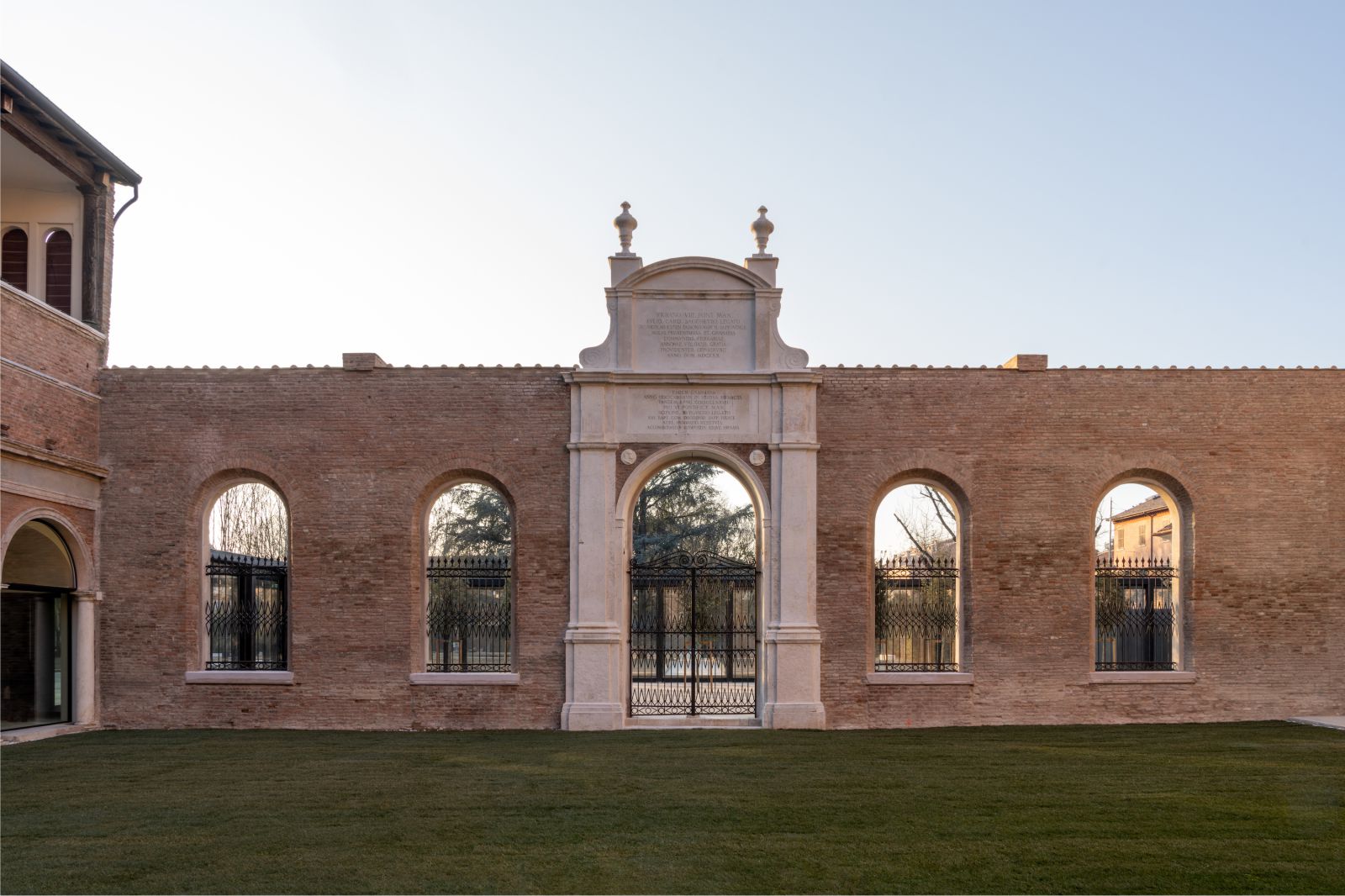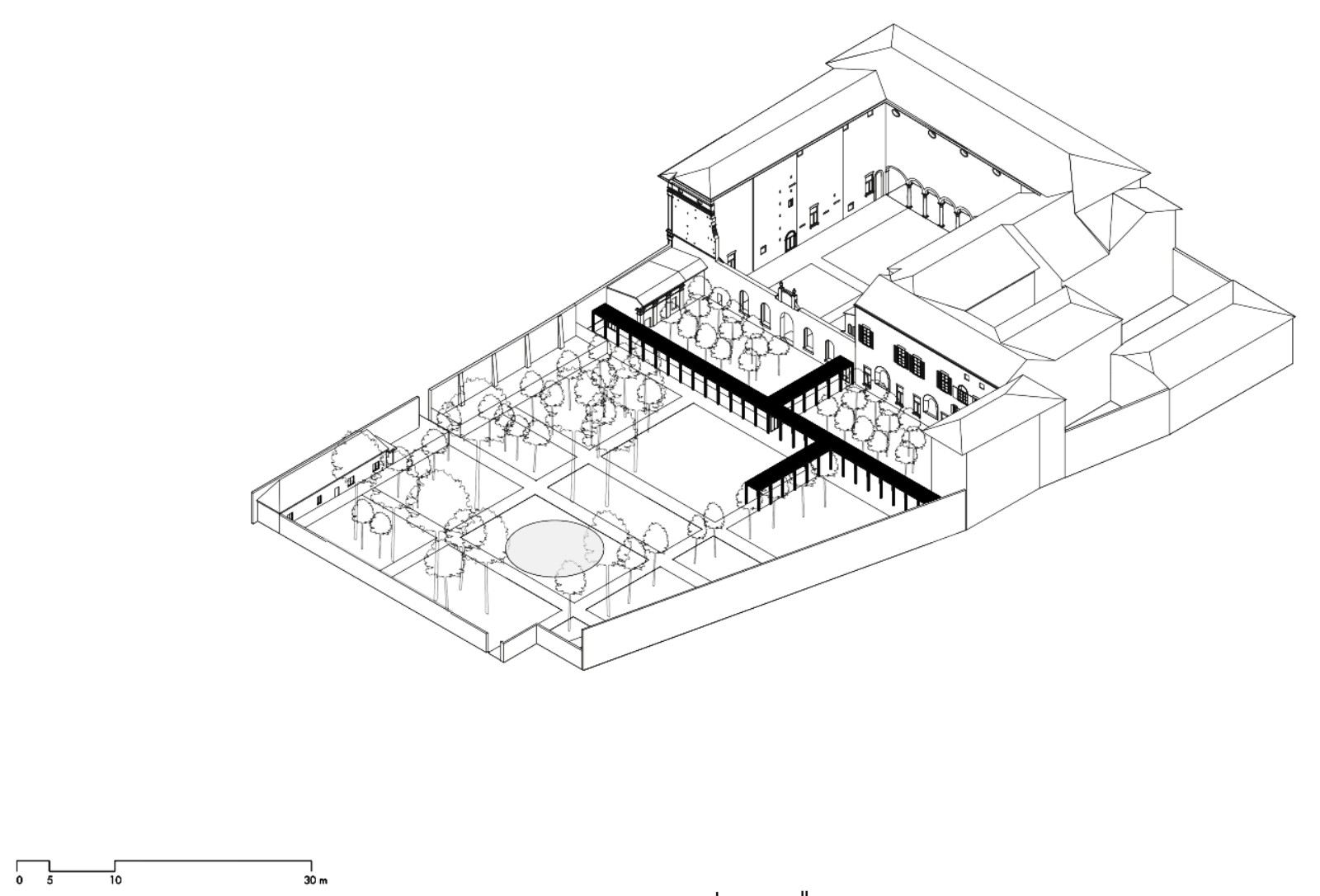Palazzo dei Diamanti in Ferrara, Italy reopens to the public after the careful restoration and refurbishment of the 16th-century complex and the renovation of exhibition spaces carried out by architectural firm Labics.
Palazzo dei Diamanti
Designed by Biagio Rossetti, Palazzo dei Diamanti was built starting in 1493 and constitutes the ideal center of the so-called ‘Addizione Erculea’, an ambitious urban project conceived for Duke Ercole I d’Este that envisaged a doubling of the city of Ferrara. The palace is so-called because it exhibits 8,500 pyramid-shaped ashlars on its two external facades, alluding to the Este emblem of the diamond.

In February 2017, the Municipality of Ferrara launched an international two-phase competition for the renovation of Palazzo dei Diamanti in Ferrara, concerning the entire ground floor traditionally dedicated to high-profile temporary exhibitions. The group formed by Labics and 3TI progetti italia was selected from among 70 participating groups.
The project
The project by Labics, dedicated to the restoration and refurbishment of the complex as well as the renovation of its interior and exterior spaces for exhibition purposes, is encapsulated in an organic and integrated series of interventions that were started in October 2020 and completed in February 2023.

The first intervention involved the main pre-existing exhibition spaces: the Rossetti Wing and the Tisi Wing. The rooms were equipped with high-tech surfaces, behind which all mechanical equipment is hidden. In the Rossetti Wing, new Venetian terrazzo floors were installed. New burnished brass portals were inserted in both wings to accentuate the spatial sequence of the Renaissance palace.
The second intervention involved the spaces formerly occupied by the Museum of the Risorgimento, which were completely renovated and designated for new functions to support the exhibition activities: coffee-shop, bookstore, educational room and multipurpose space.

In addition, Labics renovated the courtyards within this section of the complex and reimagined them as “open-air rooms,” integrating them into the museum’s itinerary and thus highlighting the distinctive features of a building that alternates solids and voids, indoor spaces and enclosed outdoor areas.
The third intervention focused on ensuring continuity in both indoor and outdoor paths. Regarding the internal pathways, Labics reopened a significant connection that had been interrupted over time between the former Museum of the Risorgimento and the main courtyard.

Additionally, they improved access through the small loggia that faces the main courtyard, making it an essential part of the visitor’s route. The most significant intervention is the creation in the garden of a connection between the two wings of the Palace through a wooden structure, essential and light, partially glazed, which extends into the garden, highlighting its main geometries.
The garden, conceived by Labics with landscape designer Stefano Olivari, recovers the layout of the ancient “brolo” (orchard) with its squares and rectangles and brings to light, in a contemporary key, the arrangement documented since the second half of the 18th century.

The contemporary museum
The project by Labics arises from the awareness that architecture is a living art for which utilitas is a fundamental aspect. The interventions carried out for the Palazzo dei Diamanti constitute a cohesive set of actions aimed at both preserving the historic building, its spatiality, its intrinsic quality, and adapting its spaces to the needs of a modern exhibition venue.
The project structures the paths of the monumental complex and establishes a contemporary idea of the museum space in the Palazzo dei Diamanti. Source by Labics.

- Location: Ferrara, Italy
- Architect: Labics
- Architect in charge: Maria Claudia Clemente and Francesco Isidori
- Structural and mechanical engineering: 3TI progetti italia
- Project of the restoration works: Elisabetta Fabbri
- Project of the set-up works: Giovanni de Vito
- Landscape design: Stefano Olivari
- Garden light design: Massimiliano Baldieri
- Construction: BUOZZI
- Architect from the Municipal Office in charge of the process: Natascia Frasson
- Client: Municipality of Ferrara
- Exhibition spaces: 790 square meters
- Exterior areas: 1.705 square meters
- Serving spaces: 693,70 square meters
- Walkway: 242,50 square meters
- Garden: 5.150 square meters
- Exterior technical spaces: 517,50 square meters
- Cost: Total 5.875.000 Euro
- Completion: 31 January 2023
- Photographs: Marco Cappelletti, Courtesy of Labics













